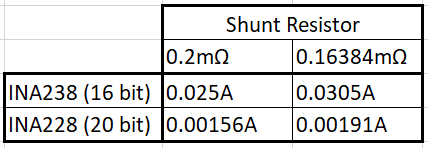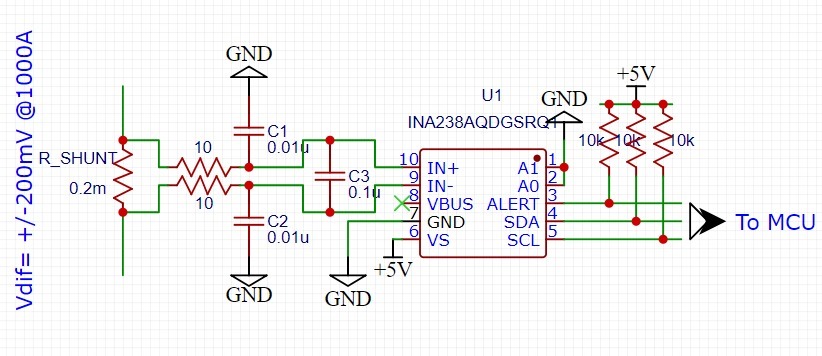Other Parts Discussed in Thread: INA181, INA226, INA238, INA228, SYSCONFIG
Hey,
Our HV BMS Application requires current measurements ranging from 0-2000A out of which 2000A is the peak current during overcurrent or short circuit scenario.
The continuous current will be not more than 300A.
Based on these requirements we had shortlisted the following system details using INA181(20V/V gain) variant:-
Rshunt = 0.2mohm with 100mV drop at 500A
Hence, at 300A continuous current the voltage drop across the Current Sense Amplifier input corresponds to 60mV Vdiff.
But, as we also need to detect over current or short circuit situation nearly at 2000A within few milliseconds the voltage drop across the current sense amplifier then will correspond to 400mV Vdiff which is comfortably within the common mode voltage range of the INA181 i.e., 26V.
Hence, as we need to select the INA181 with the lowest possible gain inorder to set up Vout below 5V for 2000A.
Considering we set the reference voltage of INA181 to 1V. The Charging current will swing between 0 to 1V Vout and Discharging current will swing between 1V to 5V Vout. 1V will translate to 0Amps.
Under these conditions we'll be able to measure a maximum continuous current of:
Vout=Vref+(Vdiff*gain)
Vout=5V, Vref=1V, Gain=20
Vdiff=0.2V or 200mV is the max drop we'll be able to measure at Vout of 5V which corresponds to 1000A.
The resolution we can get using 12bit ADC of MCU is 5V/4096 = 1.2mV which translates to a step size of 6A which is too high for our application as we need the step size in mA for higher accuracy during coulomb count.
Hence, we were considering the INA226 for our application as it has 16bit ADC which can give us a step size 380mA.
Would like to know your thoughts if the INA226 will be suitable based on our conditions if not what is a better solution.
Thanks



